Ski touring in Hakuba’s backcountry
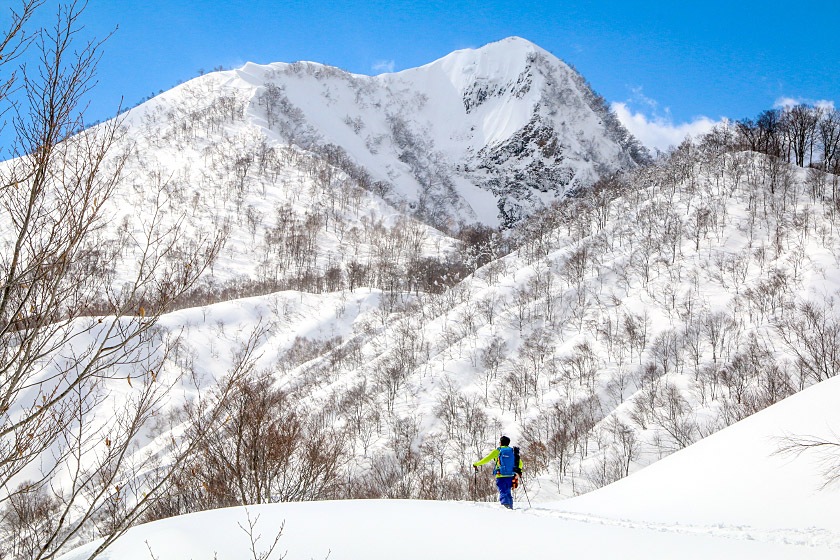
Over the last two decades, more and more skiers and snowboarders from around the world are discovering the legendary volumes of powdery snow that grace Japan's mountains each winter.
But as more foreign travelers flock to Japanese ski resorts in search of powder, actually finding those fabled freshies on resort pistes is no easy feat. It's no secret Japan's popular resorts see some staggering crowds each season. But experienced riders who come to explore terrains full of fresh powder snow instead often find themselves hunting for scraps on piste edges or wandering into possibly unsafe territory to find it.
For those skiers and boarders looking for more freedom and fresher snow in Japan away from the crowds, backcountry touring may be just the right answer.
For this Among the Peaks report, my goal was to find an experience that offers a true taste of Japan's snowy mountain backcountry, but one that both experienced and new backcountry explorers can enjoy.
My search led me to Hakuba. Outside Hokkaido, the Hakuba valley in Nagano Prefecture is arguably Japan's premiere winter sports destination, boasting reliably excellent and abundant snow conditions, over 10 resorts, and a lively ski village with plenty of accommodation and English-speaking shops. This also makes it a good place to find a backcountry guide.
Getting a guide
If you're new to the backcountry in Japan, joining a guided tour (or hiring a private guide) is smart. A guide not only knows the best local terrain (and should have avalanche training for avoiding dangerous spots), but can also help take care of logistics like transport to/from the tour and renting equipment. Prices range from around 12,000 - 20,000 yen for group 1-day tours (and between 30,000-60,000 for private tours).
While most guides/tour companies are (as you might expect) Japanese, Hakuba is one of the few places outside of Hokkaido with several well-established English-speaking and even foreigner-run companies. A simple search online will turn up plenty of options.
For my own adventure, I found an excellent local Japanese company (by the name Powerzone), made a reservation, and met the group at their shop in central Hakuba in the morning to gear up and get ready for a day in the mountains.
Going up
After some introductions, our guide, the talented and ever-excited Takahashi Mamoru, briefed our small group of four on the day's conditions and where we'd be touring, and then we hopped into cars and drove about 40 minutes north of Hakuba proper to the remote village of Otari.
For a snowboarder who's spent the majority of his time on a board in resorts, this was a completely different world. Not a lodge, lift, parking lot or other people anywhere in sight. We parked near a small ryokan, booted and geared up, and walked along the road till we came to our entry point into the hills.
Today, our tour was 100% human-powered. Skiers fastened climbing skins to their skis and I strapped my board to my backpack and my boots into snowshoes. And then we were off.
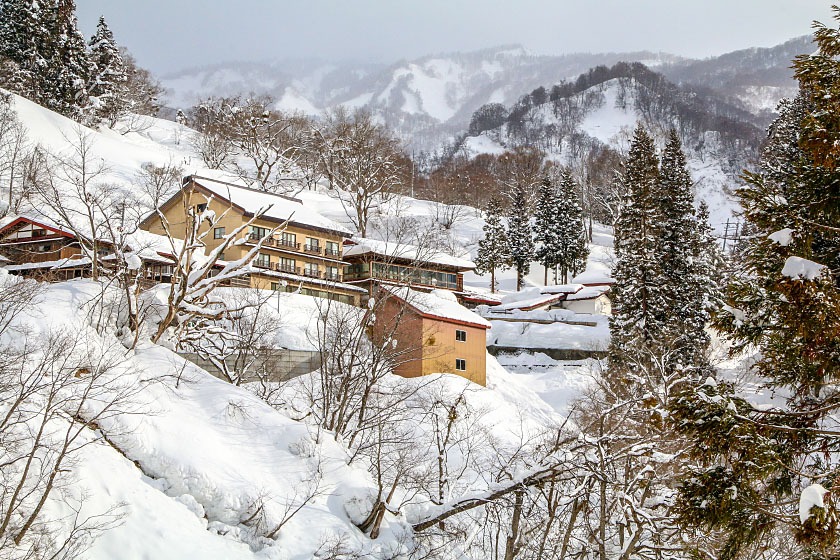
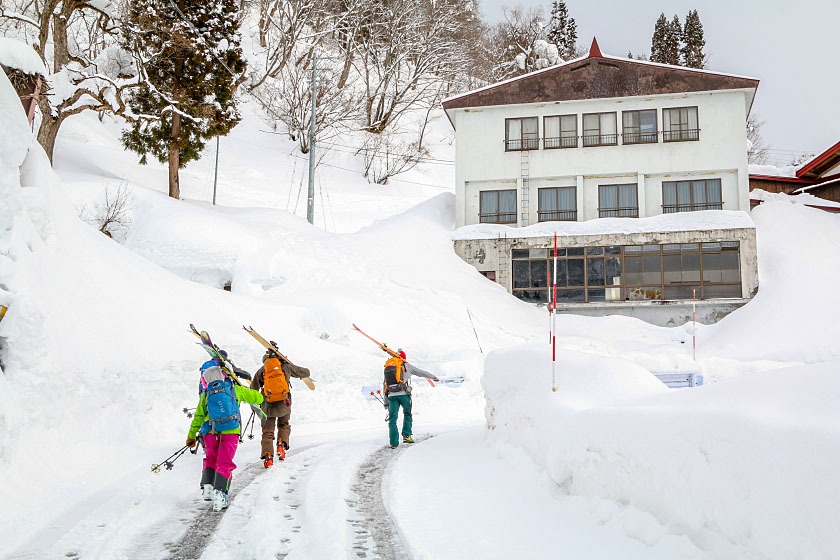
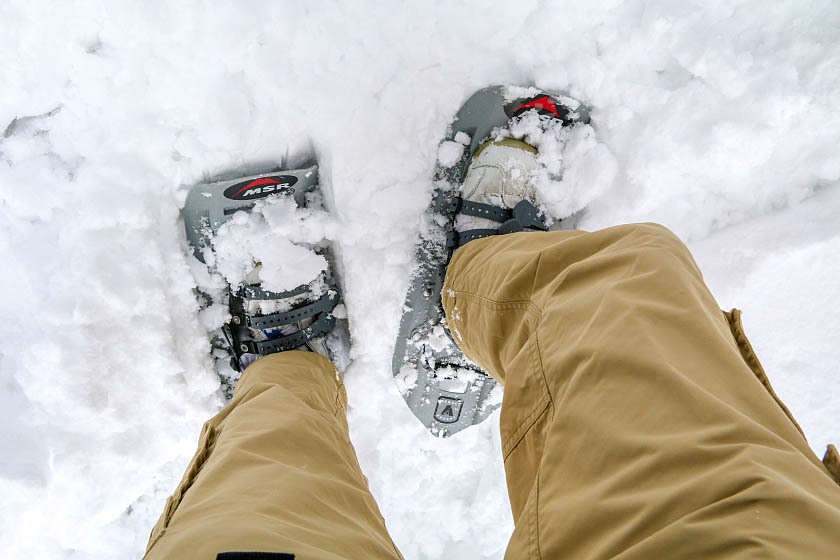
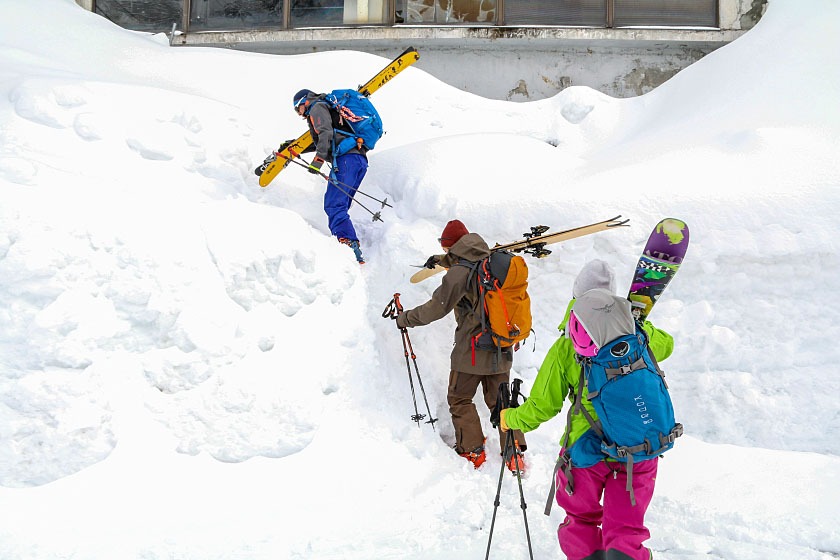
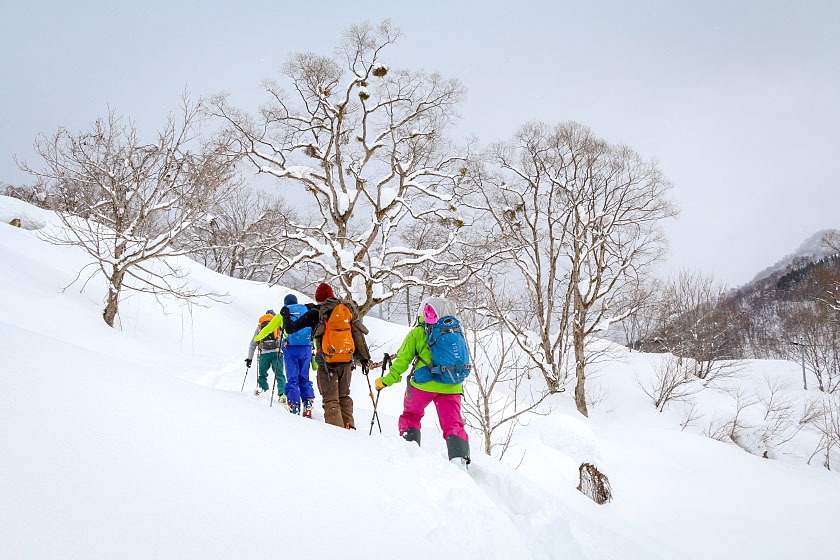
It didn't take long before a realization set in: exploring the backcountry is as much about trekking through the terrain as it is skiing or snowboarding on it. To reach our first stop, we hiked uphill for about 90 minutes in knee-deep snow. With full packs (and a snowboard on my back), this wasn't exactly a casual day on the slopes.
But the rewards were already abundantly clear as we walked through the silent, white landscape and the incredible mountain vistas came into view.


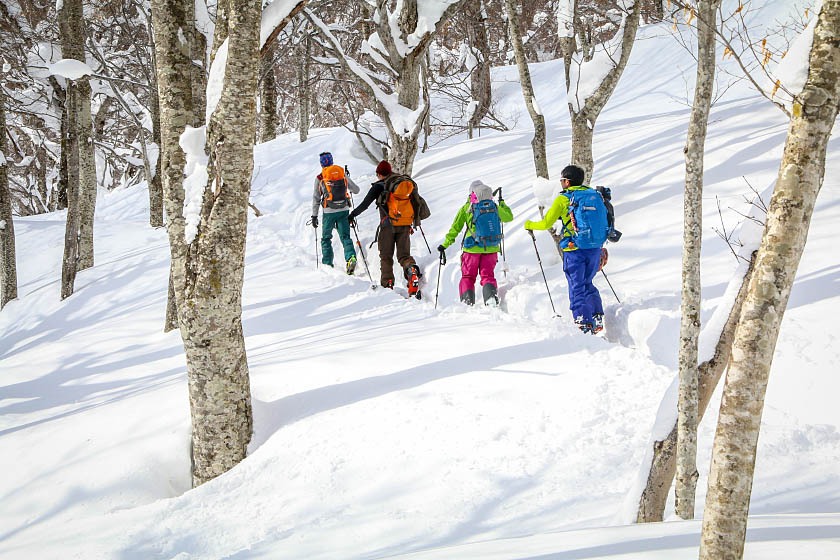
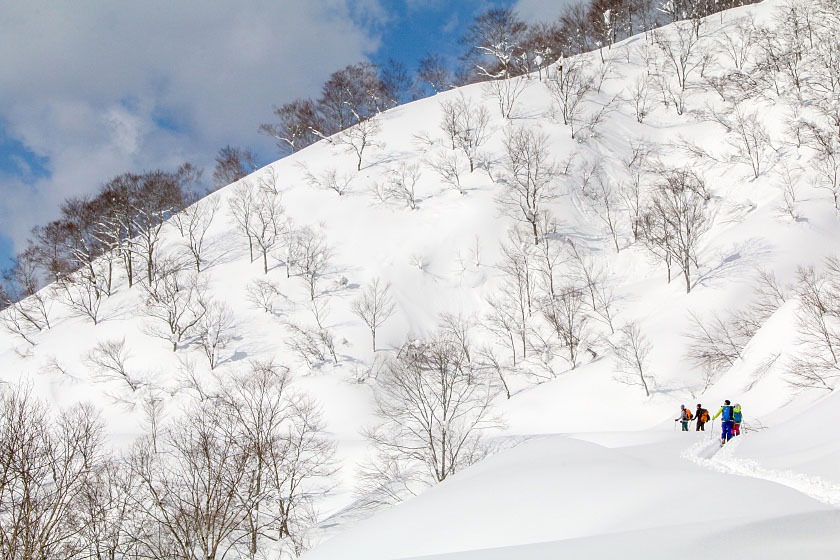

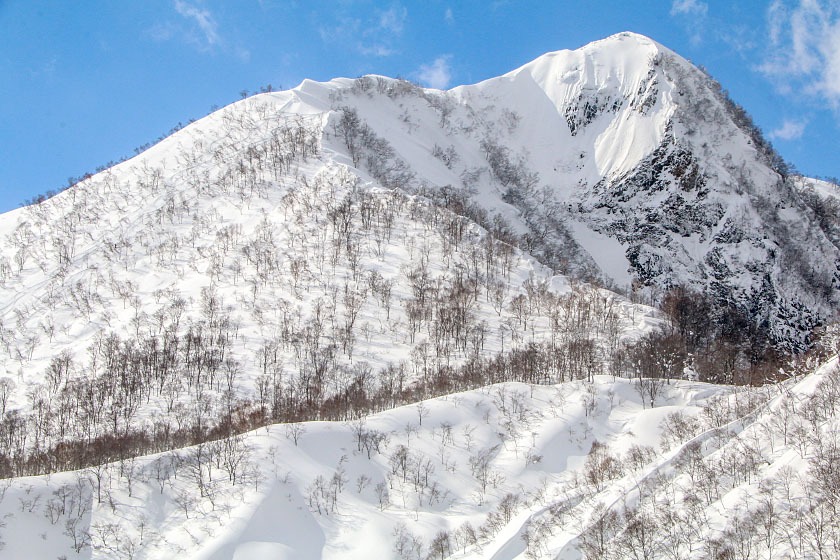
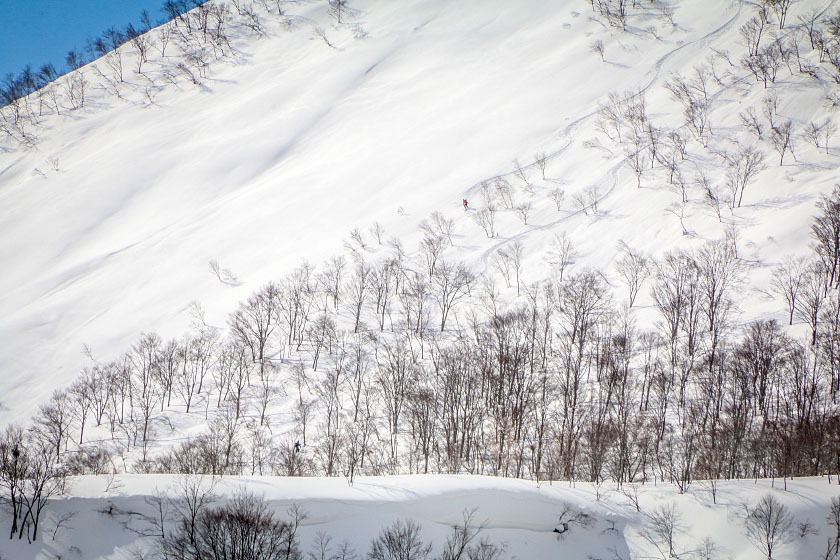
Going down
After a short warm-up run and another hour of hiking, we finally reached a high point. It was a bit warm this day, and some of the snow on the hike up had started getting a bit clumpy and hard to ride. So, Takahashi-san had guided us to the top of a north-facing slope for our first big ride.
For skiers, this "mode change" entailed removing skins, and for me, swiching from snowshoes to my snowboard. For everyone, it meant putting back on a layer or two after the warm, sweaty hike to face the cold slope.
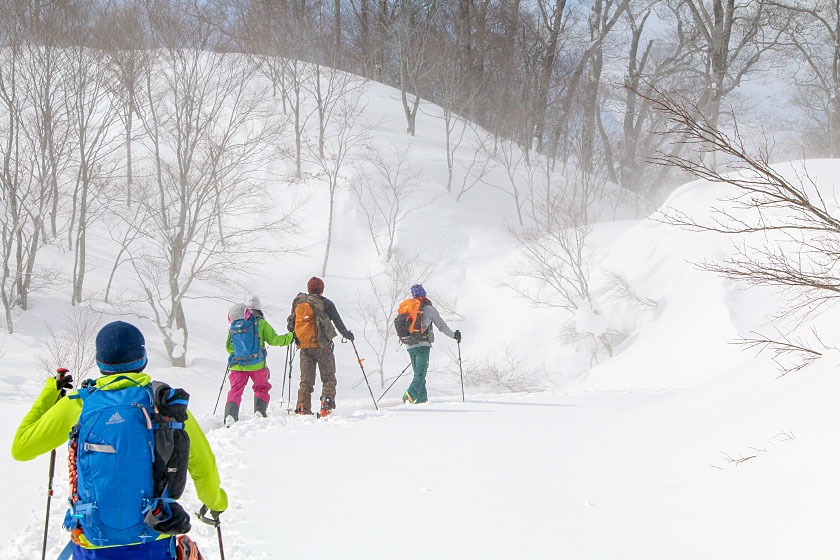
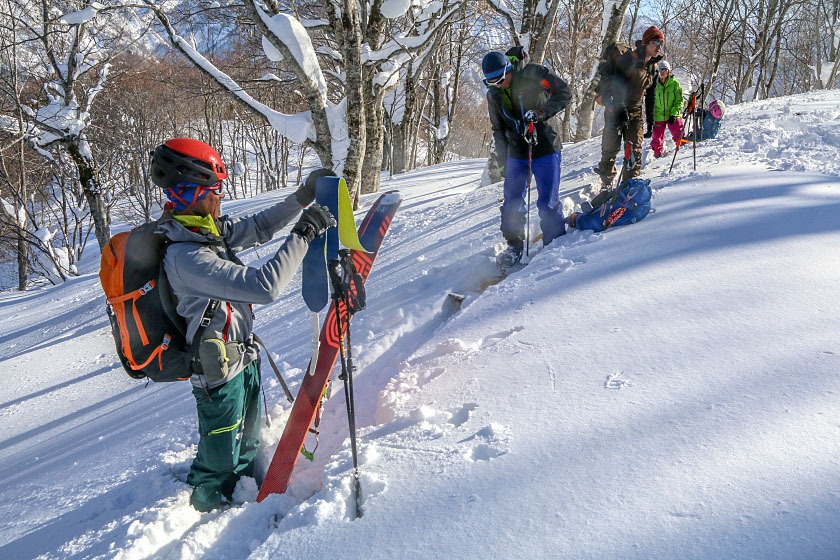
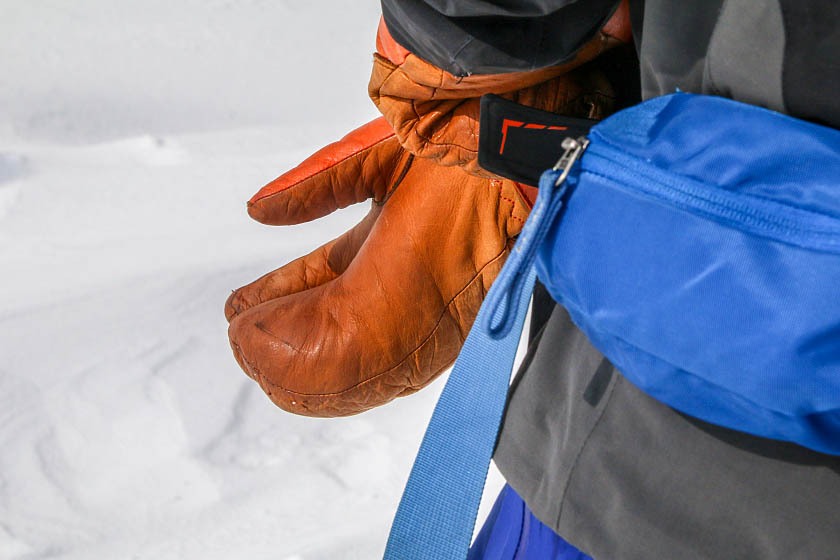
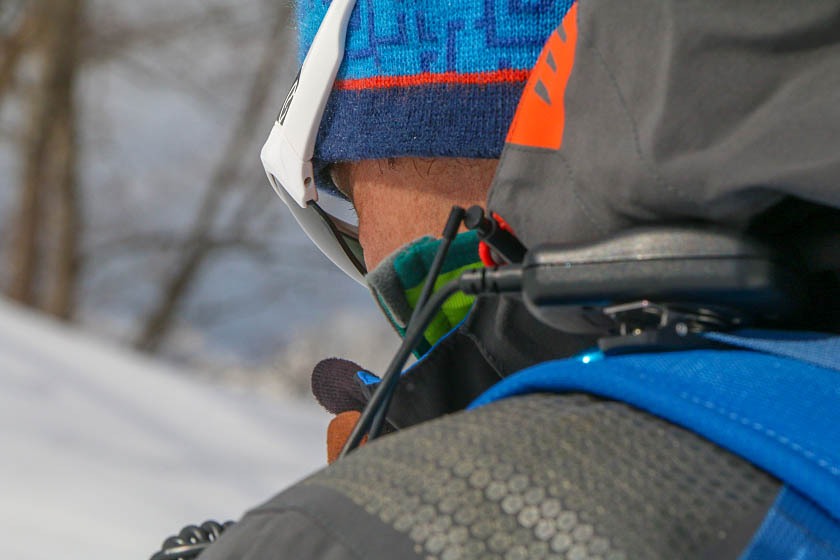
And then: the fun part.
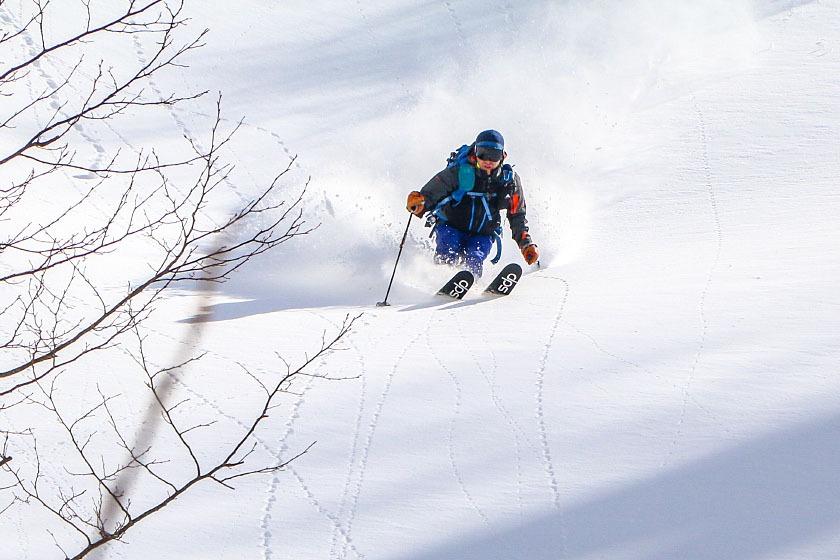
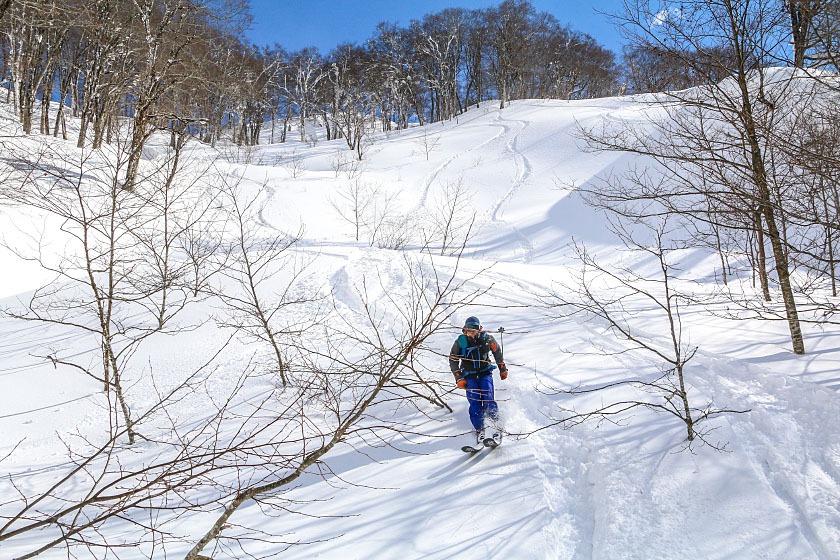
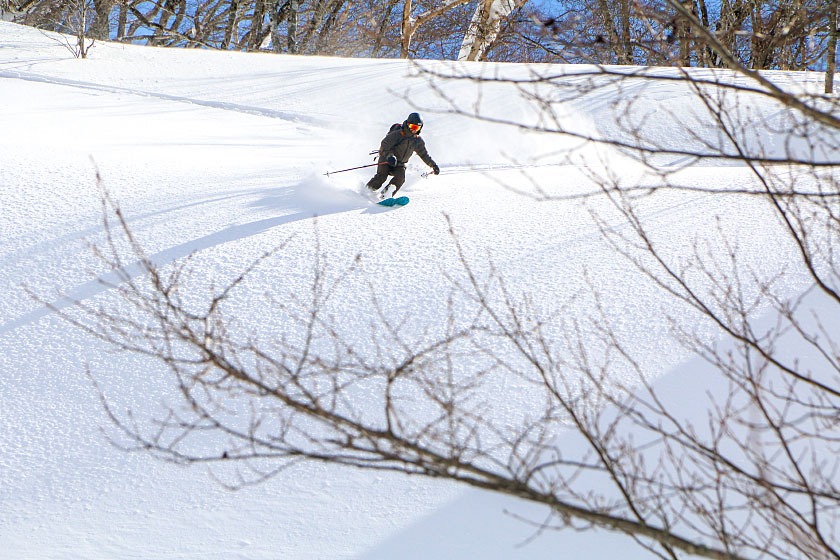
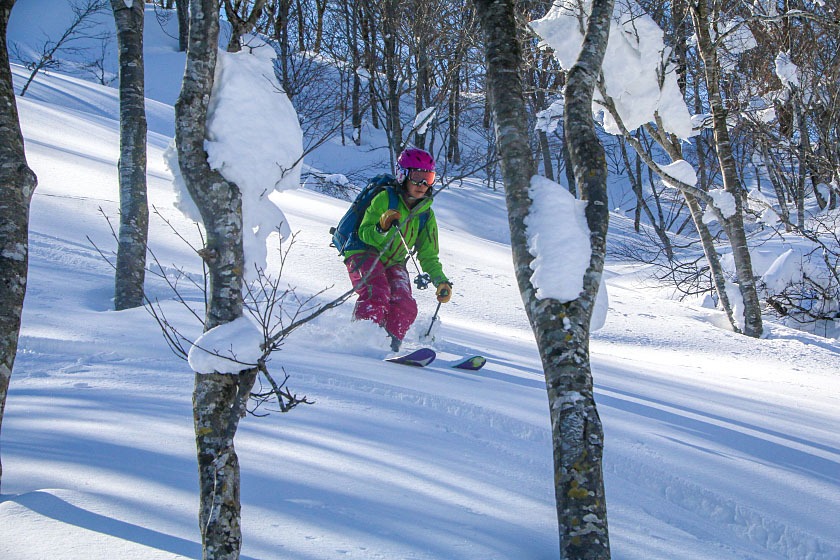
It's hard to ask for more as a snowboarder than a day of making fresh tracks through top-notch powder. The terrain here was varied: gladed, steep in spots, but mostly manageable for an intermediate-experienced rider. The most exciting part, though, may have been the ever-present reminder of being in this incredible vast place, exploring its changing terrain as we found it.
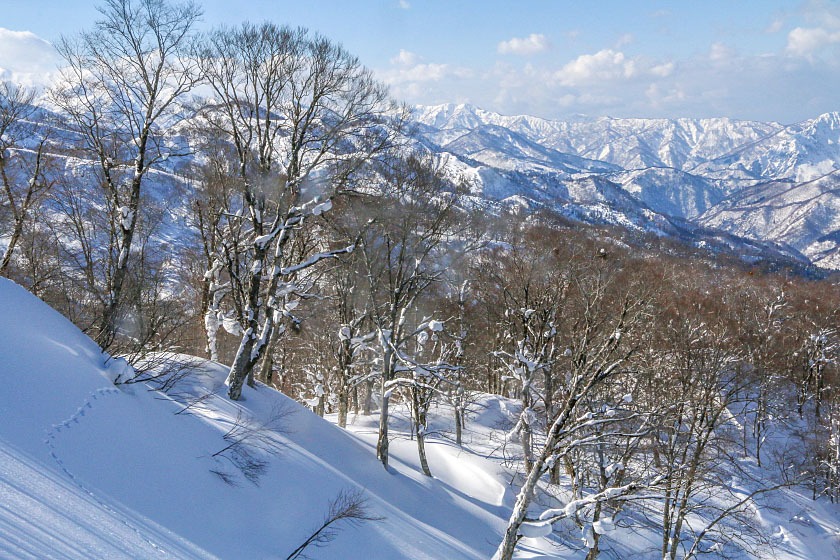

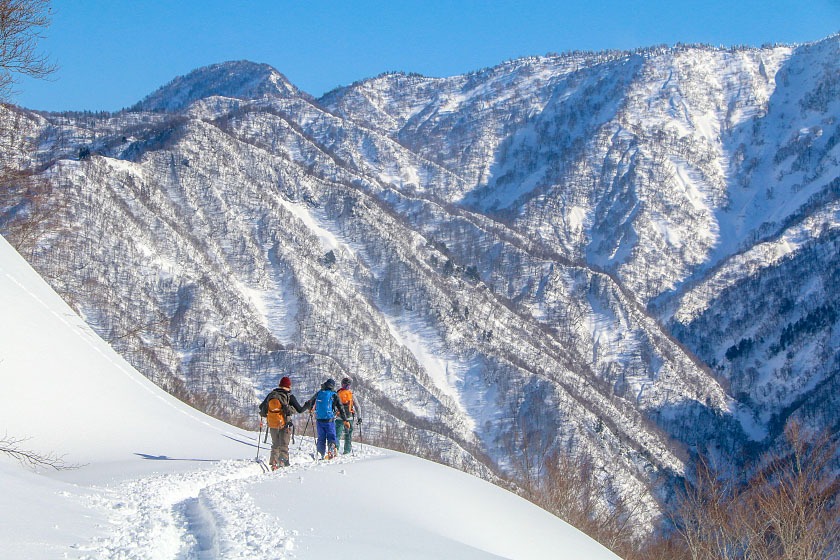
After several long, satisfying runs, we made our way back to the south face again and finished descending back down to the ryokan and cars, tired, but definitely satisfied.
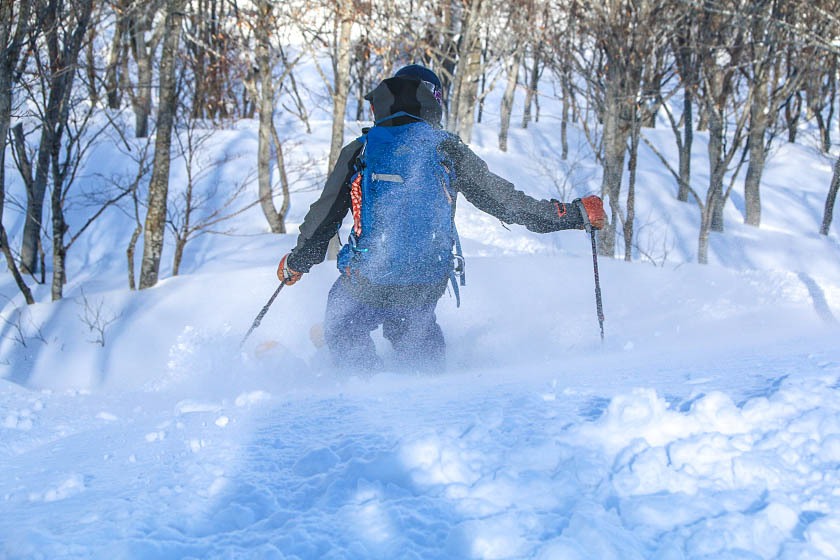
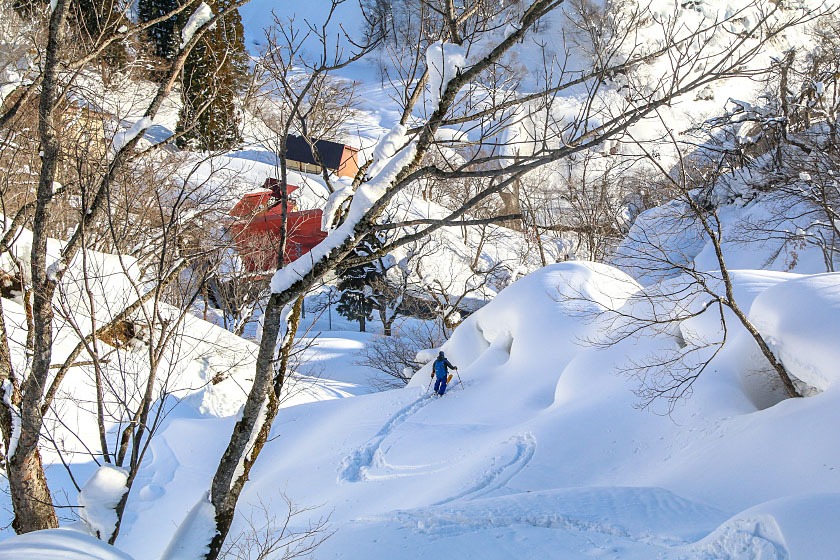
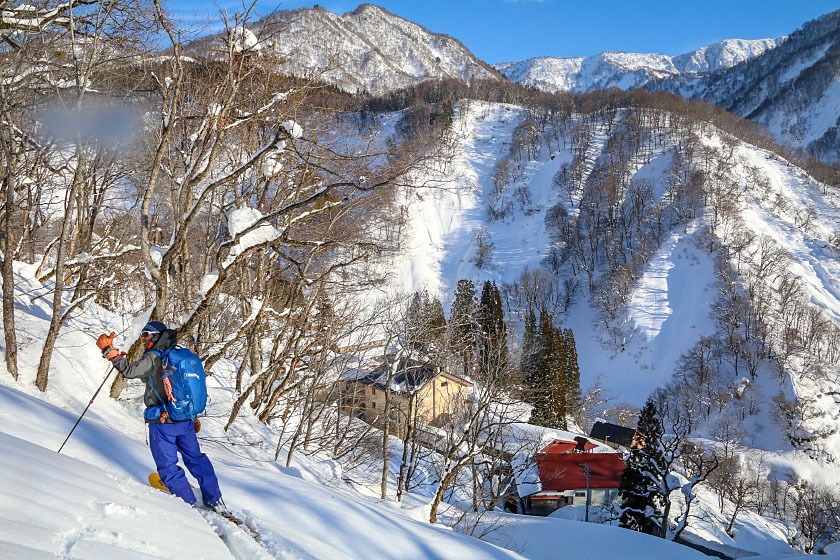
When to go
In snowier areas like Hakuba and Hokkaido, backcountry season in Japan usually begins around mid-late December and can last well into April or even May, though the best powder conditions end around mid March.
Recommended guides
- Powerzone
- The guide used in this article (Japanese-speaking only)
- Evergreen Backcountry
- Well-established foreigner-run guiding company and school (English-speaking)




